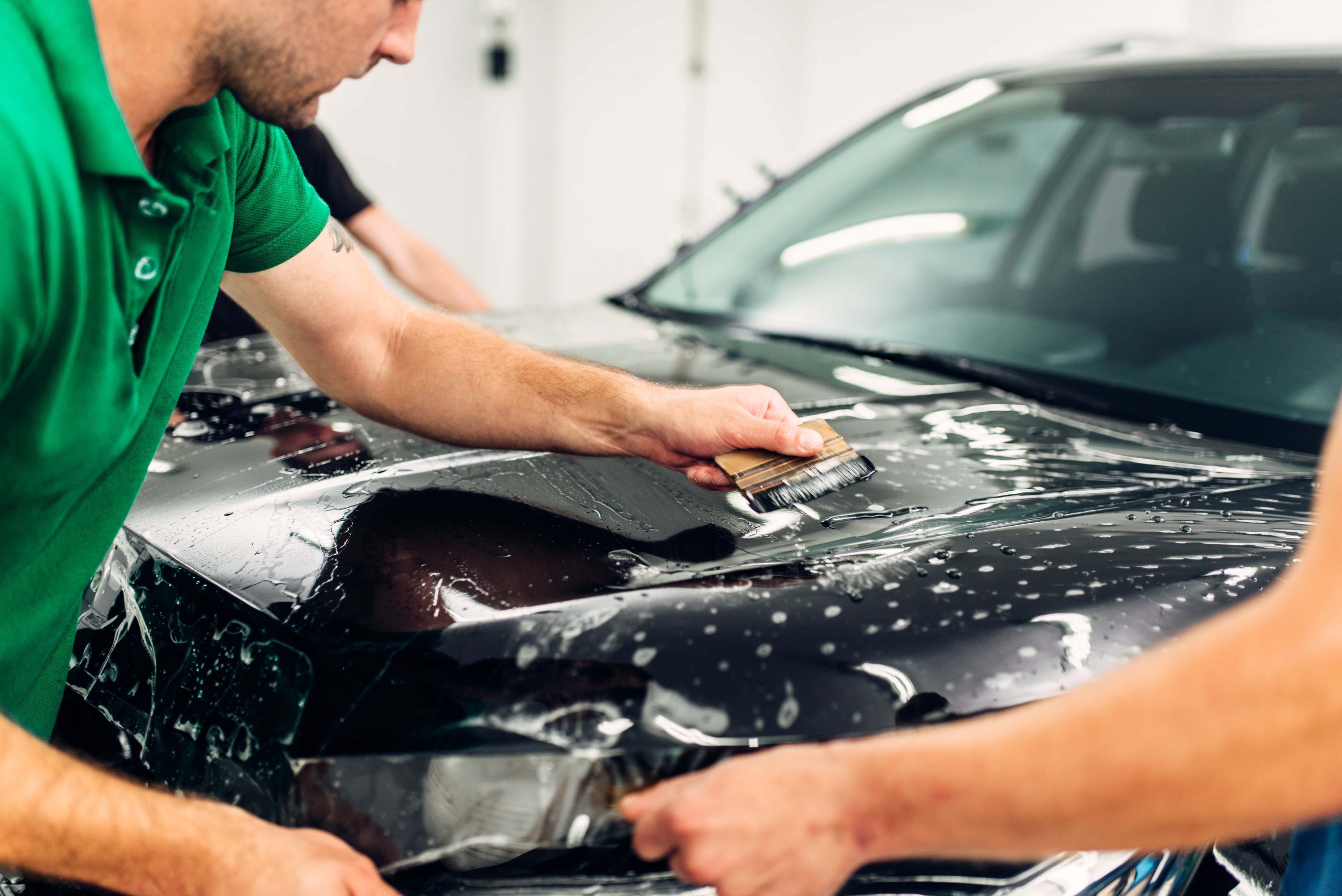Paint protection is the key to keeping your car in brand-new showroom condition- bright and shiny like the day you bought it. While paint protection won’t stop your car from dinting or any major damage, it will protect the paint from wear-and-tear such as minor damage from stones, scratches, animal droppings and even colour fading. It isn’t a fool proof solution, however, it definitely maintains the longevity of new car paint and reduces maintenance in the future.
So, what is paint protection?
Paint protection is an invisible layer that sits on top of your cars paintwork and serves as a barrier. There are two major types of paint protection. Paint protection film, and ceramic paint protection. Paint protection film (PPF) is a thin, skin-like layer of polyurethane that forms a transparent layer of protection on top of the car. It’s applied in a wrap-style, so it’s best left to professionals to apply to avoid any nasty bumps or bubbles.
PPF creates a protective surface against things such as minor scratches and scrapes but also UV exposure and oxidation. This is particularly beneficial in a hot climate such as Australia where we have harsh UV exposure which is known to fade the colour of cars paint work. PPF can even self-heal when minor scratches occur, making it a sound investment for your vehicle.
The other option is ceramic paint protection. This was once more expensive and relatively out of reach for most, however, it’s recently become more popular and can even be purchased from your local automotive store. Ceramic paint protection is a hydrophobic high-gloss coating that is applied in a spray and wipe-off style. It is mainly used by professional automotive detailers and hard-core car enthusiasts thanks to its high-gloss finish and its characteristics of repelling water and dirt from your vehicles surface. It has similar benefits as PPF, however, there are a handful of differences between the two.
What’s the difference?
Most information online will tell you that PPF lasts longer than ceramic paint protection. However, as PPF takes the brunt of the abrasive damage to your car, after a few years it can start to show damage. On the other hand, ceramic paint protection tends to show less damage than PPF, but only if properly maintained. It is recommended that your vehicle be washed at least once a fortnight, and using a specific automotive soap designed to be used with this kind of coating. The car should also not be washed in direct sunlight to reduce the chance of the water damaging the coating when exposed to bright sunlight. If the coating isn’t properly maintained, you run the risk of it losing its hydrophobic qualities and complete failure of the coating resulting in permanent water spots and damage.
Is paint protection right for me?
Chances are, if you’re living in Australia, the answer is yes. Australia has one of the most highly rated UV rays in the world. UV can fade, damage, and even crack your paintwork with long exposure. This damage can be hard to fix and sometimes is even irreversible.
Other factors when considering paint protection are
- How often do you drive your car?
- Does your car sit outside or not under cover?
- What kind of roads do you drive on, do they flick up rocks and debris?
- Are you parking your car under trees where birds roost or objects can fall out of trees?
- How often do you polish or wash your car?
If you would like to level-up the aesthetics of your car and maintain its brand-new feel, then paint protection is for you. Always do your research and ask a professional to find out what is the best option for you and your vehicle.
If chipped or dull paint isn’t the only problem with your vehicle, contact the friendly team at Auto Leaders to see how we can help keep your car in its best condition possible.



